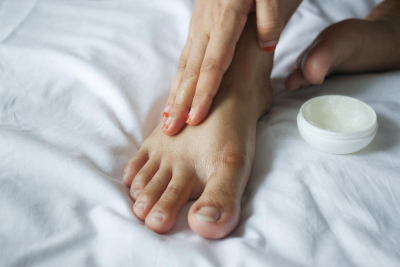
On June 4, 1872, American chemist Robert Chesebrough was granted a patent titled "Improvement in products from petroleum". Chesebrough mentioned the name with which he marketed petroleum jelly in this patent, which is now a brand name.
Whenever you had minor skin scrapes and burns, or just had to moisturise your face, hands, or other parts of the body, chances are that you probably used petroleum jelly. Yes, the folks around you or the elders at home probably referred to it with its brand name, but if you look at what it is made of, you will realise that it is petroleum jelly.
For one-and-a-half centuries now, petroleum jelly has played a pivotal part in skincare, be it to help with skin moisturising or healing. Also called petrolatum, petroleum jelly is a mixture of mineral oils and waxes that forms a semisolid jelly-like substance. Ever since American chemist Robert Augustus Chesebrough discovered it in the 19th Century, the product hasn't changed much.
His job turns obsolete
A British-born American chemist, Chesebrough owed his discovery to serendipity. He began his career as a chemist distilling kerosene from the oil of sperm whales. This role, however, soon turned obsolete with the discovery of petroleum in Titusville, Pennsylvania.
Now jobless, Chesebrough decided to travel to Titusville. He decided to research the new fuel to see what new materials might be created from it. Strolling around the oil field, Chesebrough came across something called rod wax, also known as petroleum jelly.
A byproduct of oil drilling, the jelly-like substance was cleaned off from the pumping equipment often. The workers told Chesebrough that it was largely a nuisance, except for one particular use. When someone had a cut or a burn, rubbing the wax on the injured area not only reduced the pain, but also allowed the injury to heal quickly.
Refines the process
Chesebrough set off back to his chemistry lab in Brooklyn with a batch of rod wax. He began experimenting and refining the process by which the wax was generated in order to come up with a solution that healed and protected the skin.
He spent the following years perfecting the technique of extracting a colourless, odourless form of petroleum jelly. By 1865, Chesebrough patented his purification method. This marked the beginning of triple-distilled petroleum jelly products, which remains the norm till this day.
By 1870, Chesebrough began distributing this pure petroleum jelly under the brand name Vaseline. He opened a factory in Brooklyn that same year and even promoted his "miracle" product by touring the entire State in a horse-driven carriage.
On June 4, 1872, Chesebrough received U.S. patent 127568A titled "Improvement in products from petroleum". In this, Chesebrough mentions that he has "invented a new and useful Product from Petroleum, which I have named Vaseline".
Even before Chesebrough started to sell his petroleum jelly, he had tested it on himself for his own cuts and burns. Despite his firm belief in the product and its efficacy, Chesebrough was still unable to sell these to drug stores.
Daredevil marketing
Things changed, however, when he demonstrated his "wonder jelly" in an extreme fashion. Chesebrough started to burn his skin with acid or an open flame in front of the gathered audience, before dabbing the clear jelly on his injuries. He would then demonstrate his past injuries, healed, he would claim, by his "miracle" product. He also gave out free samples to further increase demand.
Chesebrough's daredevil acts worked as a tin of his product was being sold every minute in the U.S. by 1874. They continue to work till this day as the brand name he coined is now a household name, used to refer to pure petroleum jelly itself rather than just the product.
But then, Chesebrough’s belief in the product was so sound that he actually ate a spoonful of it every day until his death aged 96, according to Ripley’s Believe It or Not! The next time you use the product, be sure to tell the tale to those around you, but please don't take it to your mouth!
Picture Credit : Google




